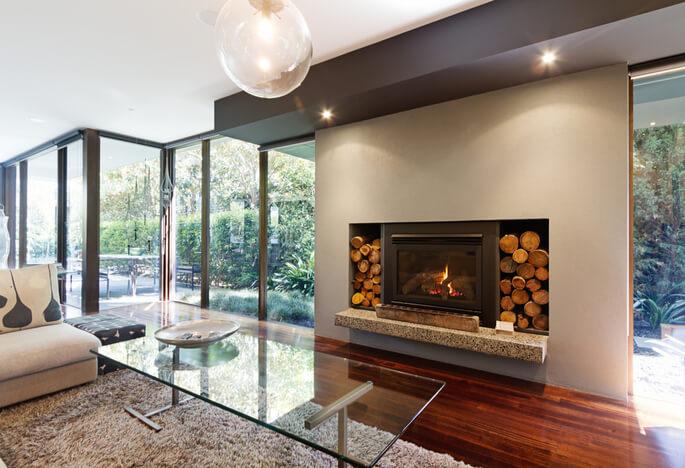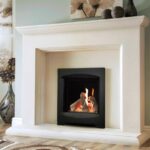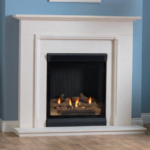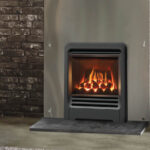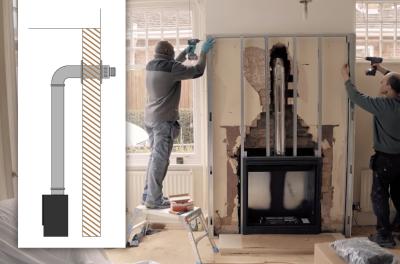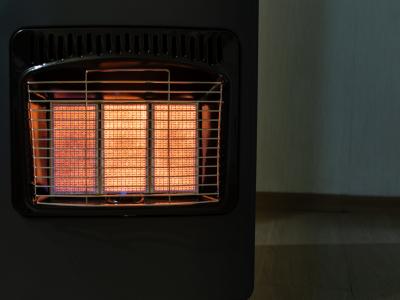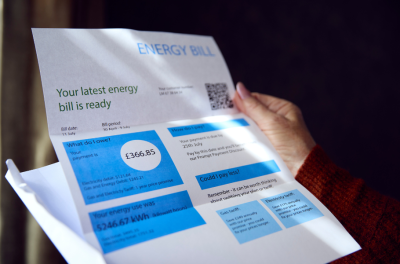We use cookies to improve your experience and our business. See our privacy/cookie policy or continue browsing to accept our use of cookies. View our cookie policy.
Everything You Need To Know About Gas Fires
When it comes to choosing a gas fire the first thing you need to know is what type of gas fire you can have. This choice will be largely based on the type of chimney you have or don’t have. We’ll start off by looking at conventional gas fires that are used with chimneys then we’ll look at options for people that don’t have chimneys.
The first thing you need to do is establish the type of flue or chimney you have.
It will be one of these three, and the best way to tell is to have a look at your roof and see if you have any of the following on the top of your chimney/roof.
-
Brick Chimney/Class One Flue
 A traditional brick chimney is easy to spot as you’ll have a proper chimney stack and a chimney pot on the top. Find all suitable inset gas fires for class one flues.
A traditional brick chimney is easy to spot as you’ll have a proper chimney stack and a chimney pot on the top. Find all suitable inset gas fires for class one flues.
-
Pre-Fabricated Flue
 These flues are made up of interlocking metal flue pipes and come out of the roof with a cowl on the top. Find suitable inset gas fires for pre-fabricated flues.
These flues are made up of interlocking metal flue pipes and come out of the roof with a cowl on the top. Find suitable inset gas fires for pre-fabricated flues.
-
Pre-Cast Flue
 A pre-cast flue constructed from concrete blocks and built into the properties' interior walls. Look for a rigid vent in the roof apex. Find suitable inset gas fires for pre-cast flues here.
A pre-cast flue constructed from concrete blocks and built into the properties' interior walls. Look for a rigid vent in the roof apex. Find suitable inset gas fires for pre-cast flues here.
Once you’ve established the type of flue you have, there are a couple of additional choices to make. This includes the type of gas fire. Do you want an outset gas fire, high efficiency of a standard open fronted fire?
Outset Gas Fires
As the name suggests, these protrude out of the wall and sit on the hearth. They either have radiant bars or some come with a living flame effect. They tend to give off a lot of heat as the body of the fire heats up and by doing so they convect heat around the room very effectively. It’s quite common as well for these fires to have large control handles on the top, good for people who have mobility issues or struggle with fiddly controls.
View our full range of outset gas fires.
High-efficiency Gas Fires
There are two types of high-efficiency gas fire: open-front or glass-front. The open-front fires tend to have an efficiency rating of about 70 - 75%, whereas glass-fronted fires tend to be closer to 80 - 90%. Both use similar technology to increase the efficiency above that of a normal gas fire.
There’s no shortage of choice when it comes to these fires and you can see our full range of high-efficiency gas fires here.
Conventional Open Fronted Gas Fires
Sometimes referred to as decorative gas fires, these are normally around 50 - 60% efficient. As with our other gas fires they come with a variety of control options and different trim and fret options, so you can choose a style that suits your décor.
See our great range of open-fronted gas fires here.
Once you’ve worked out which chimney/flue you have and the type of fire you want, you then just need to choose the control option and the trim and fret you want. We’ll quickly explain the trim and fret options followed by the different control options.
The trim and fret are the decorative parts of the fire. The trim goes around the edge of the fire, and the fret sits at the bottom of the fire. Most fires come with a choice of colours styles of these.
There are three different control options choices. Slide or top control, remote control and manual.
-
Slide/Top Control
 A favourite for customers with mobility issues, these controls ignite and control heat and no bending to light the fire.
A favourite for customers with mobility issues, these controls ignite and control heat and no bending to light the fire.
-
Remote Control
 Either semi or full remote control, light the fire from the comfort of your armchair.
Either semi or full remote control, light the fire from the comfort of your armchair.
-
Manual Control
 Manual controls are usually located behind the fire fret, push to ignite and turn to control the flames and heat.
Manual controls are usually located behind the fire fret, push to ignite and turn to control the flames and heat.
Now we’ve explained about the different types of fires you can have and the different control options and finishes available but what if you haven’t got a chimney and you want a gas fire? If this is the case, then please read our guide on having a gas fire with no chimney. Alternatively, keep reading to find out how gas fires work.
How do gas fires work?
Gas fireplaces and gas fires are still the most economical option for most people in the UK - it’s more than 50% cheaper than electric for heating, according to a survey conducted by Confused About Energy. There’s also a lot of talk about wood burning stoves but if you don’t have your own forest, or at least a place to store and dry a ton of logs, then gas is the option for you.
However, these days there are hundreds of different styles and six different types of gas fire to choose from, so where do you begin?
Read on and we’ll try to give a little information on the different fire types available today:
High Efficiency Open Front Fires
Open front high efficiency gas fires have the look and feel of a real open fire with the advantage of 74% net efficiency. They provide convected and radiant heat and the pebble or coal fuel effects emit radiant heat perfectly. Convected heat occurs when cool air drawn into the base of the unit is warmed by a heat exchanger and sent back into the room through the fire’s canopy.
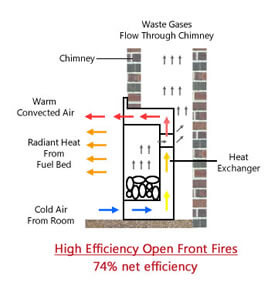
Outset High Efficiency Fires
Living flame effect fires sit on the hearth rather than being set in the chimney. Glass fronted, they work in much the same way as other inset glass fronted fires. They have a much larger area of radiant heat generating from the fuel effect due to the glass panels on sides of the appliance as well as the front. Check out our range of outset gas fires and freestanding gas fires for more details on this design.
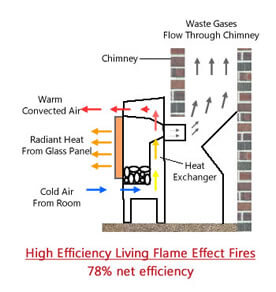
Radiant Outset Fires
Sometimes thought of as old-fashioned, radiant gas fires use ceramic plates rather than coal or pebble fuel beds to warm the room by radiating heat. The ceramic plates hold heat very well and can stay warm long after the fire has been turned off. They also convect heat to the room by means of a heat exchanger which takes cold air from the base and releases hot air from the canopy.
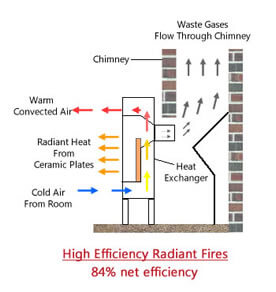
Glass Front High Efficient Gas Fires
Hearth mounted or hole in the wall glass gas fires, featuring glass fronts, are the most efficient available for conventional chimney flue systems. With efficiencies up to 89%, their heat radiates directly into the room. Concentrated by the glass panel, these fires force more heat into the room with less escaping via the chimney. They also provide warm air via convected heat passing through a heat exchanger and out into the room.
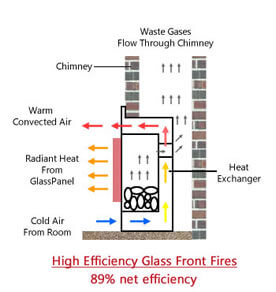
Balanced Flue High Efficiency Gas Fires
Balanced flue fires are designed for those who want all the benefits of a gas fire but don’t have a built in chimney or flue in their home. A balanced flue fire comes with it’s own flue terminal that vents directly through an external wall. They are glass fronted, completely sealed appliances and work by drawing air and venting external air via a pair of co-axial tubes into the fire for combustion purposes.
The radiant heat generated from the fuel bed combines with convected heat, which is drawn into the base of the fire through the heat exchanger and then emitted as warm air through the gap above the canopy, making balanced flue one of the most efficient types of gas fires available. Check out our range of balanced flue and power flue gas fires.
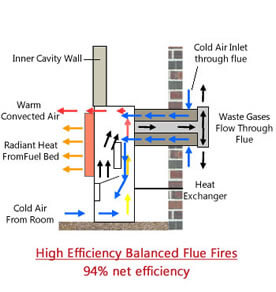
Flueless Gas Fires
Flueless gas fires are designed for those who want the benefits of a gas fire but don’t have a chimney in their home. A flueless gas fire is an extremely clean burning device that also has a catalytic converter built into it. The catalytic converter scrubs the air passing through it, removing any harmful emissions and safely releasing carbon dioxide into the air.
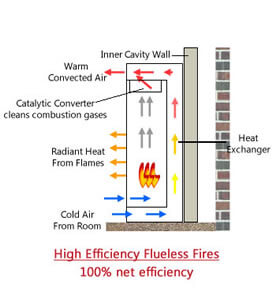
Flueless inset gas fires are also fitted with ODS or Oxygen Depletion Sensors which constantly monitor air quality and will switch off the fire if the air quality drops at all. Individual safety products switch off at different rates but all use much smaller margins than found in modern CO detectors.
We hope this clears up some of your questions surrounding gas fires but if you need more from the Direct Fireplaces team then please get in touch.
[related_products is_auto_added="1"]direct fireplaces
Latest posts by direct fireplaces (see all)
- Which Electric Fireplace Gives the Most Heat? - February 5, 2021
- Retro Fires and Retro Stoves for the Home - January 22, 2021
- Do I Need a Fireplace in My New Home? - January 20, 2021

